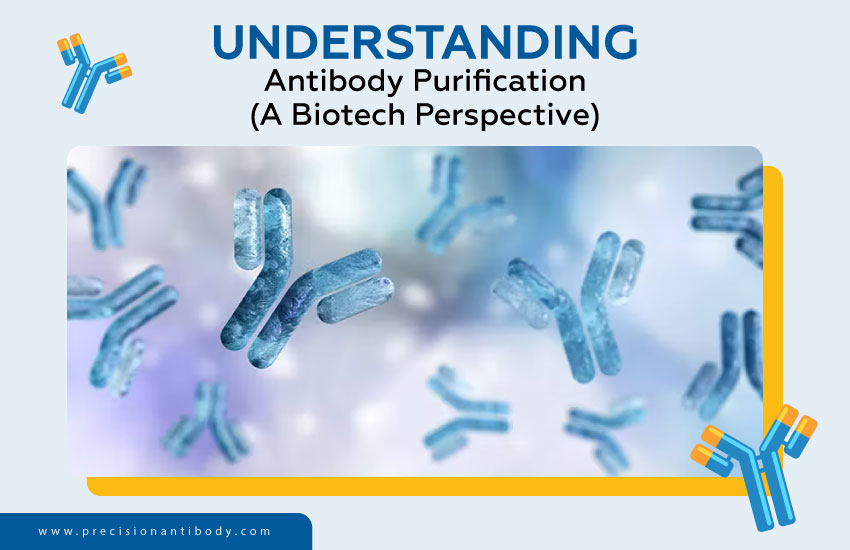
The purification of antibodies from complex biological mixtures is essential to biotechnology since it guarantees high purity and potential applications. These antibodies are necessary for achieving precision and reliability regarding diagnosis, therapies, and research.
Through purification, antibodies are separated from proteins, cells, and other impurities, preserving their biological function. The contamination of hybridoma supernatants, blood plasma, and cell cultures are all potential sources of contamination. Through the use of this blog, we will investigate a variety of methods that broaden our understanding of antibody purification.
Antibody purification is more than a technical procedure; it helps biological innovations succeed by eliminating contaminants and improving antibody purity and functioning. This technique is essential for research, diagnosis, and therapy.
Optimizing biotechnology processes requires antibody purification ideas and methods. Scientists can produce high-quality antibodies for specific research and therapeutic purposes by choosing the correct purification methods and circumstances.
To create therapeutic and diagnostic uses, antibodies must be purified and functional. Antibody-based treatments and diagnostics require this purification for efficacy and safety.
Therapeutic antibodies target disease-related antigens. Purification is essential for:
Standard diagnostic developments:
Standard antibody purification methods:
These purification methods are integral to producing antibodies suitable for therapeutic and diagnostic applications, ensuring they meet the necessary standards for clinical use.
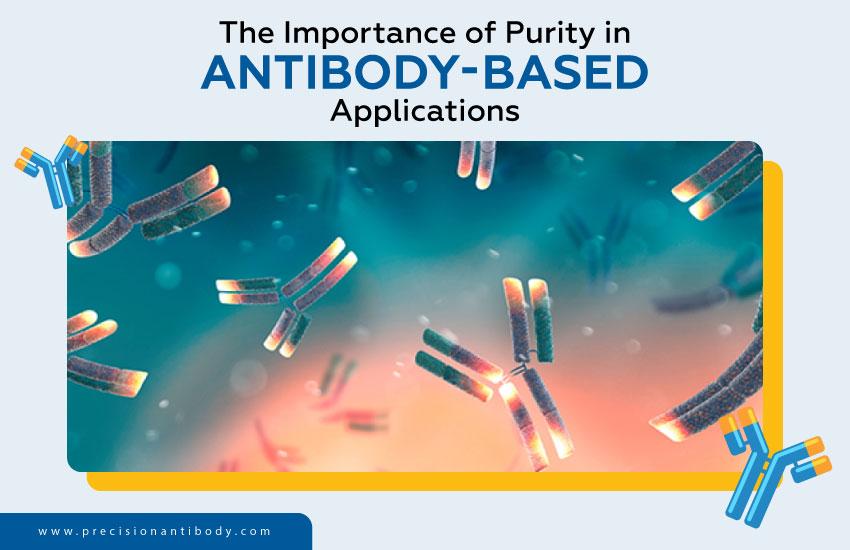
In scientific and industrial research, antibody purity affects reliability. Impurities in antibody preparations can result in poor performance, unpleasant responses, and inconsistent findings. Purity ensures antibodies bind to target antigens without interference, improving their function. Non-specific binding must be avoided to avoid false positives and negatives in diagnostic assays and lower clinical efficacy.
Monoclonal antibodies (mAbs) are used to treat cancer and autoimmune diseases. Immunogenic responses can result from antibody impurities, compromising patient safety and therapy efficacy. Therefore, extensive purification techniques are needed to remove impurities and maintain therapeutic antibody quality.
Diagnostically, antibodies’ specificity and sensitivity are crucial. Impurities can disrupt antibody-antigen interactions, skewing results. High-quality antibodies improve diagnostic test reliability and target antigen detection by lowering background noise and boosting signal clarity.
Unpurified antibodies often contain impurities that hinder therapeutic and diagnostic efficacy. Identifying and understanding these prevalent contaminants is essential for antibody-based product efficacy and safety.
Gram-negative bacteria’s outer membranes contain endotoxins. Even small doses can cause fever, inflammation, and septic shock. Large-scale antibody synthesis and purification are prone to endotoxin contamination. Endotoxin contamination can affect antibody effectiveness, notably in animal models of bacterial sepsis.
Antibodies generated in cell cultures can co-purify with residual proteins from the host cell. These pollutants have the potential to impair the stability and safety of antibodies. Regulations require the reduction of HCP to allowed limits to ensure the continued protection of products.
When employed to manufacture antibodies, cell lines can potentially create viral contamination. To avoid illnesses, it is necessary to eliminate these toxins. If it is not purified further down the line, the cell-wall-less bacteria known as mycoplasma can infect cell cultures and threaten the safety of the cells.
It is possible for non-purified antibody preparations to retain DNA and RNA from the host cell. Even though they are in low concentrations, their immunogenicity and regulatory issues make their existence undesirable. To ensure the safety of biopharmaceuticals, regulators establish residual DNA limits.
5. Aggregates
In the course of manufacturing and storage, aggregates may be produced. The immunogenicity of aggregates may be increased, while the therapeutic efficacy may be decreased. Analytical processes that identify and quantify aggregates ensure the purity and safety of antibodies.
To remove these impurities, significant purification and quality control procedures must be performed on antibody-based medicines and diagnostics. This is necessary to guarantee that these products are both safe and effective.
Unpurified antibody contaminants can negatively impact study uniformity and accuracy. These contaminants can cause non-specific binding, inaccurate data, and irreproducible results, compromising scientific conclusions.
Host cell proteins, nucleic acids, and endotoxins can cause non-specific antibody-antigen binding. Signals may misrepresent target antigen presence or quantity due to non-specificity. The lack of defined antibody validation methodologies has caused variable immunohistochemistry and quantitative immunofluorescence results.
For scientific progress to occur, research repeatability is essential. However, antibodies that have not been verified or polluted substantially contribute to unpredictable results. Due to issues regarding the specificity and consistency of antibodies, a significant number of seminal works could not be replicated.
There is a possibility that variances in the production process could result in variations in antibody batches and differences in the study’s outcomes. The heterogeneity that occurs from batch to batch affects the dependability of investigations based on antibodies, underscoring the significance of thorough validation and standardization requirements.
Mycoplasma, bacteria, and viruses are all capable of causing harm to cell cultures that produce antibodies. Because of these pollutants, cell physiology and protein expression are altered, which decreases the quality of antibodies and experimental data. Cell cultures of Chinese hamster ovary (CHO) infected with mycoplasma require substantial contamination management, reducing the antibody output quality.
It is possible to circumvent these challenges by utilizing stringent antibody validation procedures, including specificity and contamination screening. Increase the dependability and reproducibility of antibody-based research through the use of standardized validation methodologies, which in turn improves scientific inquiry.
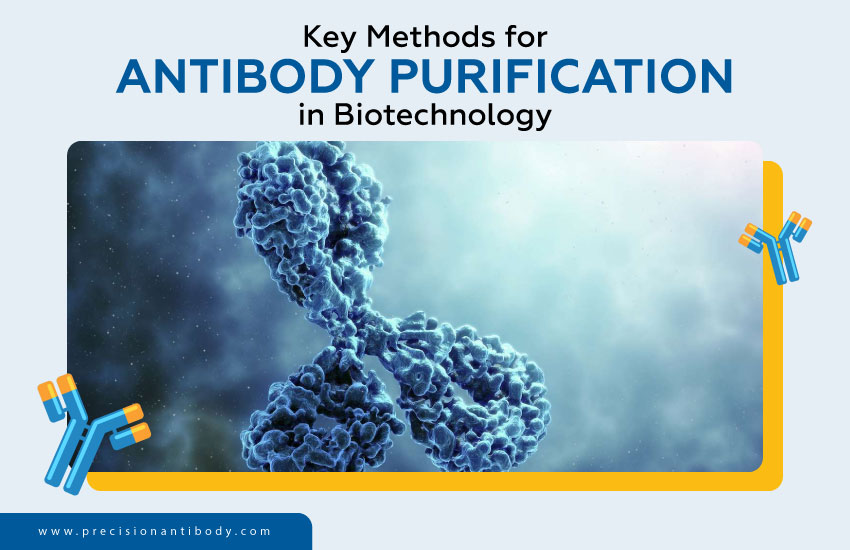
Purifying antibodies, which guarantees the isolation of antibodies with high activity and specificity levels, is one of the most important processes in the biotechnology process. This is accomplished in various ways, each with unique benefits and uses.
1. Affinity Chromatography
Many people use affinity chromatography, a technology that leverages the unique interactions between antibodies and their corresponding antigens or binding partners.
By immobilizing an antigen or ligand on a chromatography matrix, it is possible to selectively capture antibodies from combinations of complex substances. High purity and specificity are attributes of the antibodies made with this technique. However, the requirement for specific ligands may make it an expensive endeavor.
2. Protein A/G/L Chromatography
Proteins A, G, and L can attach themselves to specific regions of antibodies. These proteins are classified as bacterial proteins. Protein L is responsible for attaching to the light chains of antibodies, whereas Protein A is primarily responsible for binding to the Fc region of IgG antibodies.
Protein G has a wider binding range. Protein L also binds antibody-heavy chains. Immobilizing these proteins on a chromatographic medium captures antibodies with Fc or Fab regions. This approach purifies antibodies from several species and subclasses.
3. Ion Exchange Chromatography
Proteins are separated using ion exchange chromatography according to their net charge. It is possible to bind antibodies to cationic or anionic exchangers and then elute them by adjusting the ionic strength of the buffer. This can be accomplished by selecting the suitable pH and salt conditions. This approach facilitates the removal of charged impurities and achieves high-resolution separation.
4. Size-Exclusion Chromatography (SEC)
As antibodies travel down a column of porous beads, smaller molecules enter the apertures and elute later, while larger molecules are excluded and elute quicker. Chromatography, another name for size-exclusion gel filtration, is a method that makes it easier to separate molecules according to their sizes.
This technique is beneficial for eliminating aggregates and preserving the monodispersity of antibody treatments.
5. Non-Affinity Purification Methods
Alternative methods, such as ammonium sulfate precipitation and caprylic acid precipitation, are used for antibody purification when affinity ligands are unavailable. These techniques are suitable for producing antibodies on a large scale and are reasonably priced, although they could require extra procedures to reach the required purity levels.
The source of the antibody, the necessary purity levels, the manufacturing size, and financial factors all influence the choice of purification technique. The maximum purity and usefulness are often achieved by combining several purification processes to create antibodies necessary for therapeutic and diagnostic purposes.
Antibody purification requires affinity resins that bind with immobilized ligands. A solid support matrix functionalized with Protein A, G, or L makes up these resins. Protein A interacts primarily with IgG-Fc regions. Protein L targets the kappa light chain, while Protein G has a broader binding spectrum.
A column with affinity resins binds antibodies to ligands while washing away impurities during purification. Changing pH or ionic strength elutes antibodies. Antibody isotype and application need to determine ligand selection. Protein A is utilized for most IgG antibodies, while Protein G or L may work better.
Ion exchange chromatography (IEC), which uses charge differences to separate contaminants and antibodies, is vital for purifying antibodies. This technique alters the pH of the solution by binding proteins based on their net charge using charged resins.
By varying the pH and ionic strength, antibodies can bind to the resin selectively while contaminants are removed. Elution is accomplished by altering the ionic strength, or pH, which breaks the bond between the antibody and the resin.
The IEC is sensitive to small charge shifts and can separate proteins with modest charge differences. The solution pH determines the ion exchanger used for precise separation. This focused and cost-effective antibody purification method ensures excellent purity.
Size-exclusion Chromatography is often used to purify antibodies by molecular size. SEC columns contain porous beads, which exclude bigger molecules like antibodies from the pores and shorten their travel time.
The holes allow smaller molecules to enter and elute later, separating molecular kinds efficiently. This approach removes aggregates, fragments, and other impurities from antibody preparations. SEC can achieve high-resolution separation with the correct column diameters and flow rates, ensuring antibody product functioning and purity.
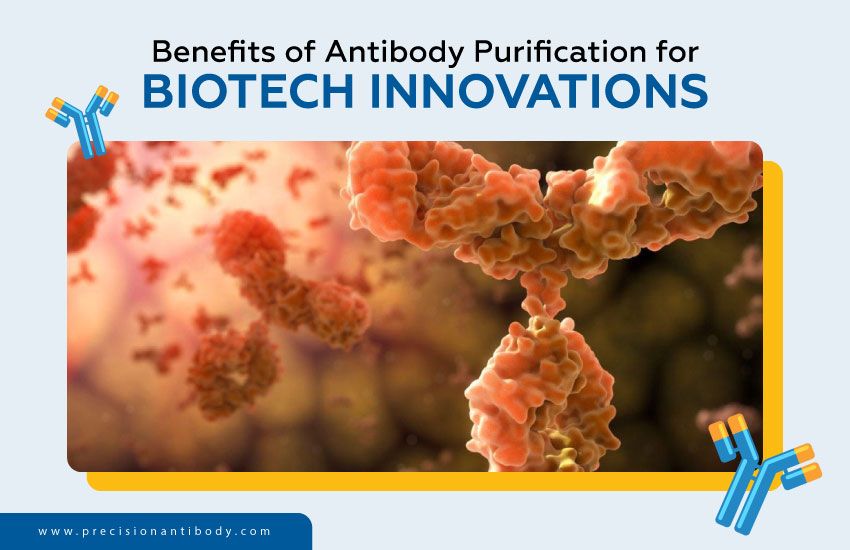
Antibody purification is a key part of the biotechnology industry since it offers several advantages that, among other things, encourage creative thinking and enhance product development methods. Through the process of isolating antibodies that possess a high level of specificity and purity, researchers can produce treatments that are more effective and focused.
In the end, this leads to improved results for patients. Purified antibodies are also necessary for diagnostic applications since they allow for accurate disorder monitoring and diagnosis. This makes them imperative for diagnostic applications.
The ability to produce recombinant antibodies through purification processes makes it simpler to build novel diagnostic tools and therapeutic tactics. It broadens the range of possibilities available within the biotechnology industry.
When it comes to making scientific investigations more repeatable, purified antibodies are considered to be necessary. Utilizing superior-quality standardized antibodies can guarantee consistent findings from various laboratories and investigations.
Maintaining this uniformity is essential for validating study findings and advancing scientific understanding. Additionally, by lowering the variability that occurs from batch to batch, the availability of recombinant antibodies, identified by their sequences, contributes to the enhancement of reproducibility.
Enhanced binding efficiency and specificity are two characteristics that purified antibodies possess, both necessary for developing efficient medicinal agents and diagnostic instruments. It is possible to achieve more efficiency in the purification and recovery of the specific immunoglobulin when using high-purity antibodies since they guarantee that all epitopes are also available for binding.
The specificity of an antibody is also dependent on the method that is used to purify it. For example, purification by immunogen affinity results in a more homogenous product than purification by Protein A or G.
In the end, purifying antibodies leads to the advancement of biotechnology inventions by increasing the reproducibility of studies, increasing the binding efficiency and specificity of antibodies, and finally increasing the efficiency with which antibodies bond.
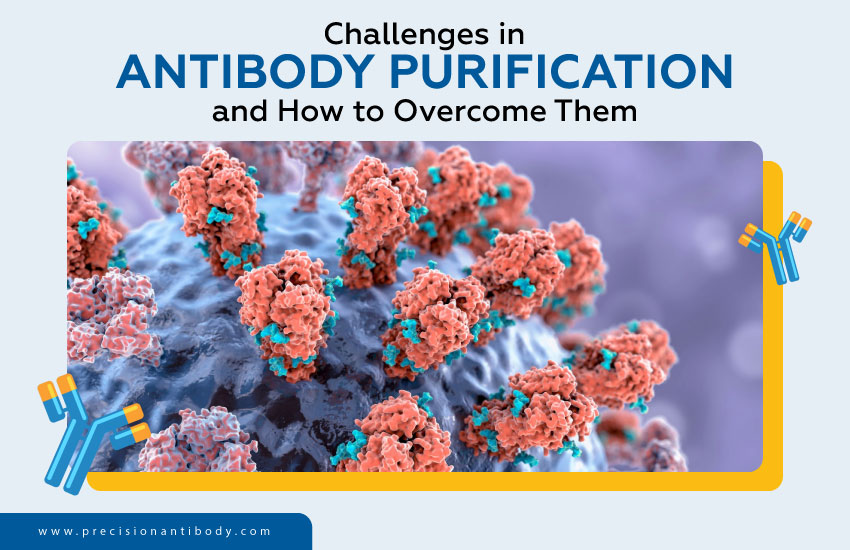
Antibody purification is essential in biotechnology, but it presents several challenges that require effective strategies to overcome.
It is paramount to guarantee that antibodies maintain their stability during purification. This is because proteins occasionally experience denaturation and diminution, rendering them less valuable. To preserve the integrity of antibodies, it is vital to have optimized buffer systems and exercise control over environmental conditions such as pH and temperature.
To guarantee the purity of the finished antibody product, purification procedures must successfully eliminate aggregates and host cell proteins. Ion-exchange chromatography can eliminate host cell proteins based on charge differences, while size-exclusion chromatography can separate aggregates based on size.
One major problem is to maximize antibody recovery without sacrificing purity. Recovery rates can be increased by modifying elution settings, buffer compositions, and flow rates. Non-affinity purification techniques can also be less expensive and less likely to cause antibody harm.
To overcome these obstacles and produce high-quality, functional antibodies for biotechnological applications, specialized purification techniques must be used with a thorough understanding of antibody properties.
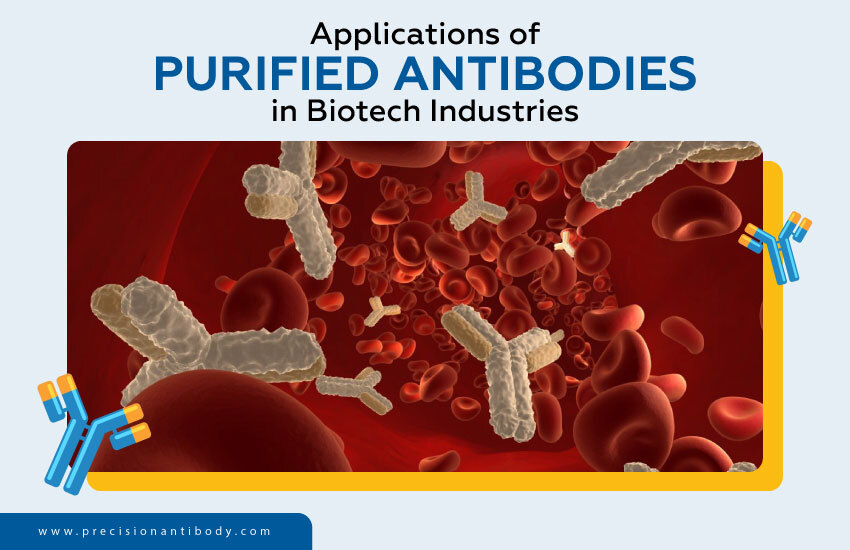
Purified antibodies are vital in biotechnology since they are utilized in various applications that propel innovation and improve product development.
Chromatography in Continuous Mode for the Analysis of Monoclonal Antibodies in Diagnostics
While maintaining diagnostic-grade purity, the SMCC process improved efficiency, decreased buffer usage, and reduced resin utilization. All of these improvements were sustained. It successfully extracted monoclonal antibodies for diagnostic assays while adhering to stringent purity criteria. As a result, the reliability of instruments such as COVID-19 antigen detection kits and other disease biomarker assays was improved.
Purified antibodies are crucial in diagnostic assays because they allow for the highly sensitive and specific detection of particular biomarkers. They are used to identify and measure target molecules in complicated biological samples using a variety of diagnostic platforms, such as western blotting, immunohistochemistry, and enzyme-linked immunosorbent assays (ELISA). This accuracy improves patient outcomes by enabling early disease detection and monitoring.
In the case of monoclonal antibodies, the Continuous Aqueous Two-Phase Extraction (ATPE) method utilized
Regarding IgG extracted from CHO cells, ATPE demonstrated a recovery yield of 80% and a purity of more than 99%. Using this technology, contaminants, such as proteins and aggregates from the host cell, were successfully removed, guaranteeing the creation of therapeutic antibodies of superior quality, which are crucial for applications such as cancer immunotherapy and the treatment of autoimmune diseases.
A variety of diseases, such as cancers, autoimmune disorders, and infectious diseases, can be treated with purified antibodies that are engineered to target specific antigens; monoclonal antibodies, for example, can be designed to block disease-causing molecules or modulate immune responses, providing targeted and effective therapies; and the development of recombinant antibodies has further expanded therapeutic options, enabling the creation of treatments that are customized to meet the needs of individual patients.
For high-throughput screening in research, ATPE
Using ATPE, the purification of antibodies suitable for laboratory research was made more expedient and cost-effective. By reducing the time needed for operations and increasing the yield, the incorporation into research and development processes was made easier, which helped biotechnology companies and academic laboratories speed up the process of developing early drugs and making breakthroughs in research.
Purified antibodies are essential for studying biological processes, protein interactions, and disease causes. They are used in various methods to examine the existence and role of particular proteins within cells and tissues, including immunoprecipitation, flow cytometry, and microscopy. The development of novel diagnostic and treatment approaches is based on this research.
In summary, purified antibodies enhance research, medicine, and diagnostics and are critical to biotechnology. Their distinctiveness and versatility keep the biotech industry innovative.
To achieve accurate results in research, diagnostic, and therapeutic applications, the purification of antibodies is a key component in biotechnology. Modern technologies make it possible to achieve outstanding purity by eliminating impurities and enhancing antibody stability. This, in turn, improves the safety and efficacy of biopharmaceuticals and ensures dependability in research and diagnostics.
The purification process is vital for quality control, scalability, cost-effectiveness, and innovation to meet the ever-increasing demand for biotechnological solutions worldwide. Effective purification techniques are necessary for producing monoclonal antibodies, diagnostic devices, and significant scientific achievements.
Researchers, producers, and healthcare providers should use and improve advanced purification techniques as the biotechnology industry develops. We can solve present issues by adopting these breakthroughs, quickening development, and guaranteeing superior biotechnology products for a healthier future.
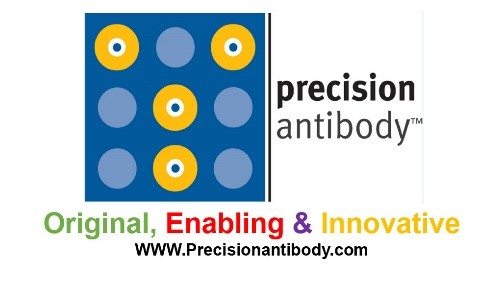
Led by innovative minds in immunology and the antibody development field, Precision Antibody has been an industry leader for over 20 years. We not only implement a cutting-edge technique in antigen design, antibody development, production, and other analyses, but we are also constantly working on ways to improve and advance technology to match the ever-changing world of science. If you are interested in learning more about Precision Antibody’s Custom Antibody development.
Precision Antibody™ is the forefront of the global Custom Antibody industry & it is led by the innovative minds in immunology and antibody development field.
